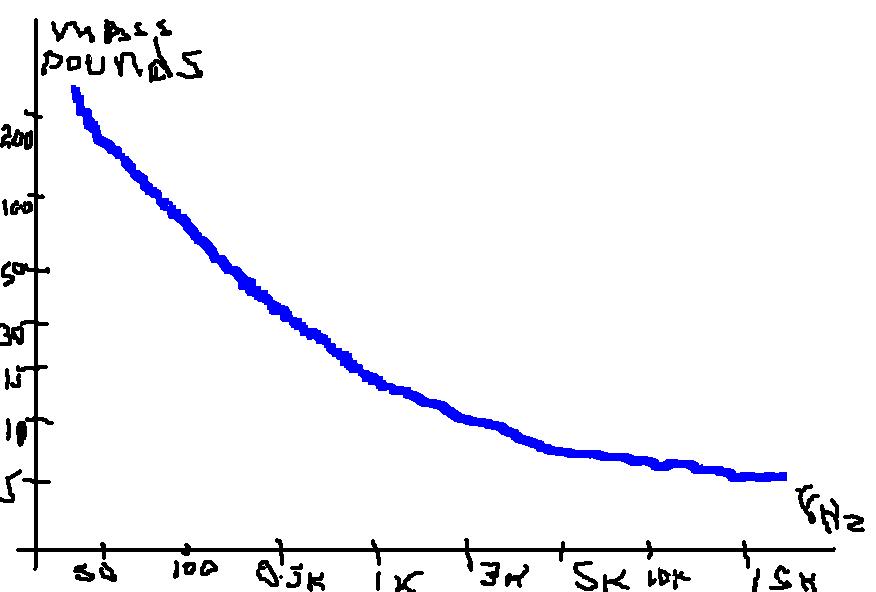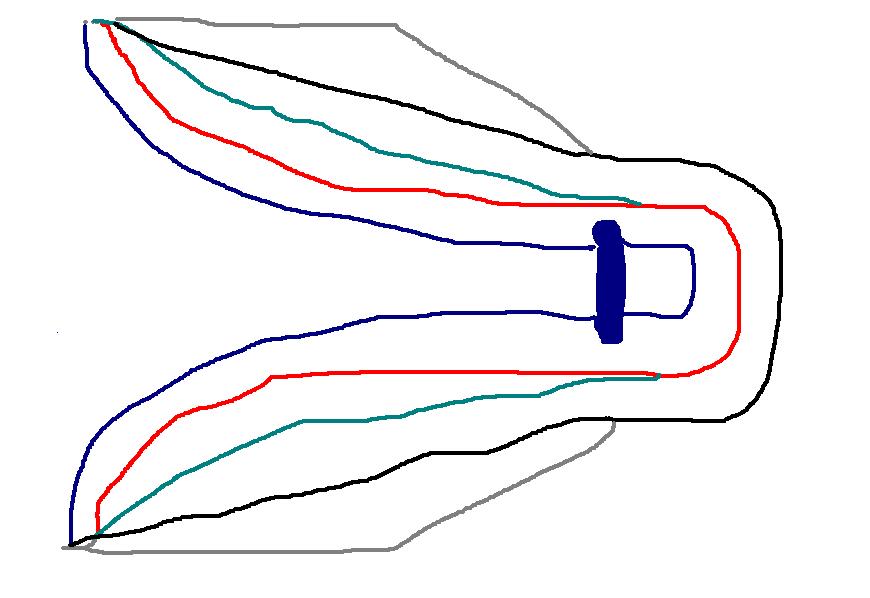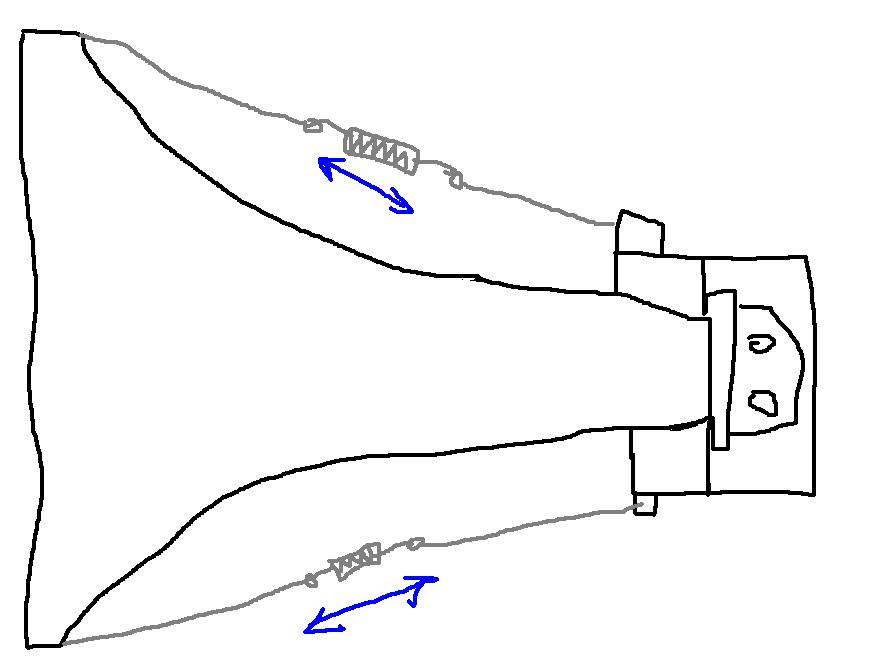Rerurn to Romy the Cat's Site
In the Forum: Horn-Loaded Speakers
In the Thread: Macondo's Axioms: Horn-loaded acoustic systems
Post Subject: A "proper" mass distribution?Posted by Romy the Cat on: 8/2/2007
Well, first of all, I would like to mention that I edited your post replacing the link from eBay images to the link to the post which features the same images only hosted on my site. I did it because eBay listing will expire in 30 days and I do not want to have dead link in my site. I hope you do not mind.
What is important to note that I mention a “proper mass” and “proper distribution” but I did not say what proper mass and proper mass distribution would be. With proper mass it is relatively simple. Here I put together as diagram which indicates a basic principle of visualizing the minimal mass of a horn. Sure, it is not the last world of precision, and for some might be controversial, but it is roughly provide a murky answer and give an idea how it might be.

With distribution of mass, however, everything is much more complicated as the materials, the construction techniques, the specific design of the given horn, along with many other things become important. However, what is the more important that I've personally never built a big horn and the only credentials I might have to discuss the subject would be to express my hypothesis.
Definitely, a back chamber of a bass horn develops at tremendous pressure and it should be very solid, however how to propagate that structural solidness too mouth? Also, how to correlate that structural solidness with the actual Sound? Here is where we enter the mysterious world of the “Resonating Oops” - no one knows what is going on. I can share my very basic observations, which mostly are based on attitude and premonition then the optional experience. Consider them or disregard them - it is all up to you. However, those principles are the principles how I envisioned Macondo, how Macondo horns I asked to be made. So…

I will say that there are a few basic ways to propagate mass from throat to mouth: red, green, back and gray. Surely, the lower horn rate the more complicated to make the walls thicker and using stronger materials the walls might be made more and thinner. Still how it all correlates to sound? I have no idea? I use much more superior techniques to make the judgment about the thickness of the horn’s on different regions – I use a sense of visual balance and pure esthetic beauty.
Let to be honest – only God knows what the hell in happening inside of bass horn and how the walls of the horn vibrates under the influence of different frequencies, different materials, different approximation to boundaries and zillions of other reasons. Furthermore, if a horn has built and still demonstrates some colorations, then the reasoning for those colorations would be other zillions factors. How from a sound of built and installed horn to subtract the sounds walls’ thickness– I do not know, and I do not think anyone else knows. The people who work with materials could say a lot about vibrations but they hardly can correlate it with Sound. We can build a horn and then begin to load it with is a dampers or mass but no one said that completely damped walls of a bass horn shell sound necessary better in context of a given installation. Therefore, when I think about bass horn mass propagation I think in the same way how I thought about Macondo upper bass horn – it shall be visually properly balanced, guessably rational and… pretty. No other criteria are known to me.
There is one “kinky” solution for lower bass horn that come to mind mine doing my “Resonating Oops” research. Since to make 50Hz straight horn with thick-enough walls is too complicated I thought that if I go there I will make it Resonating-Oops-adjustable. The image below indicates the idea if I would not willng to go do 800 pounds construction

The CatRerurn to Romy the Cat's Site